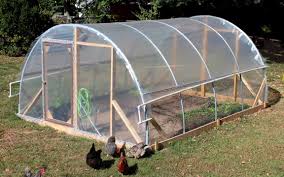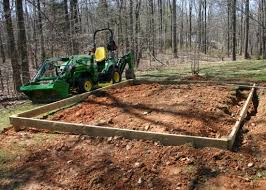Many cannabis consumers reach a point in their relationship with cannabis where they decide they want to grow their own and so, they set out to build a cannabis greenhouse. Often times these fledgling farmers fail – growing quality cannabis is hard. However, when you do finally want to put “shovel to earth”, before you build your cannabis greenhouse, the first thing to do is think about the end game: what are you REALLY wanting to do?
Is your goal to grow for personal use? Or, do you see yourself as a ‘player’ in the cannabis game? Both of these paths require a different launching point.
Geography
Terroir and microclimate are two terms most typically associated with vineyards, however, they’re equally as important when thinking about your cannabis grow – especially if you’re thinking about growing outdoors.
So, what does geography have to do with a Greenhouse grow? The answer is: quite a bit. If you’re going to be growing year round, for example, does it snow where you live? Is your area a high wind zone? What about rainfall and mildew?
The challenge when growing in a greenhouse (or indoors) is you’ve got to augment (either with lights or fans or both) your environment in order for it to be a productive grow.
In addition, you have to think about the cultivars and strains you’re planning on growing – there are lots of things which can go wrong which might be mitigated by very thorough planning.
Bureaucracy
Permits, you gotta find out if you need permits. Not for the cannabis (unless you’re growing more than personal use, then, yes, permits for cannabis too), but for the structure and your property.
Some communities have very tight zoning regulations which can impact:
- What kind of greenhouse you can build
- How big a foot print you can have
- Where you can place the structure on your property
You should consider speaking with someone in your community or network who has successfully built a greenhouse in your area to find out what challenges they had to overcome and to see if they have any thoughts on ways to get through the process easier.
Drying and Curing
Since you can’t dry and cure your cannabis in the greenhouse, you have to plan for how you’re going to do this very important part of the grow cycle. Specifically, you’ll need an enclosed space which is dark and which doesn’t get too hot or humid.
The Science of Cannabis Curing
There’s a science to curing which says: 60 degrees Fahrenheit and 60 percent humidity. The goal is to cure the cannabis for about 12 to 14 days. You’ll know it’s ready when a bud (or flower) ‘snaps’ cleanly off the dried branch, which should take about two weeks.
Once you get your room running at these outputs, you’ll be able to cure your cannabis appropriately.
How much space will you need?
Two things to consider: cannabis plants can easily reach six-feet in height or more AND you don’t want the plants to touch the greenhouse plastic as that can create condensation inside the greenhouse.
So, you’ve got to plan to have enough room inside the greenhouse or you’ll just create problems for yourself during production.
Building a Hoop-Style Greenhouse
The easiest and least expensive design to undertake is the hoop-style greenhouse design. It follows a simple concept:
- A set of PVC pipes are bent into arches and erected to create half-circles, all at a set distance apart from each other
- These are attached to a frame of base boards for stability.
- Plastic is then placed over these arched pipes to protect the interior, letting in sunlight and diffusing it for maximum coverage.
Basic Materials
Here are the materials you’ll need to build a simple hoop-style greenhouse based on a dimension of 12’ H x 12’ W x 12’ L. This dimension can comfortably fit 6 cannabis plants which is the legally allowed personal use limit in California.
Materials List:
 6 – cedar 2 x 4’s for base boards
6 – cedar 2 x 4’s for base boards
6 – 2 foot long by 1/2 inch diameter rebar stakes
1 – sledgehammer, mallet or post setter
3 – 20 foot long, 1.5 inch diameter PVC plastic pipes
3 – 12 foot long, 1.5 inch diameter PVC plastic pipes
1 – sheet of plastic sheeting: 6 mil polyethylene, 24’ x 20’
1 – heavy duty stapler and staples
1 – roll of duct tape
(Optional) Landscaping fabric as shade cloth, 24’ x 20’
Construction
 First you need a spot of ground which is at least 12 feet wide and 12 feet long. It should have a southern exposure to get maximum sunlight.
First you need a spot of ground which is at least 12 feet wide and 12 feet long. It should have a southern exposure to get maximum sunlight.- Put together your frame using the wood planks.
- Use a pole setter or a sledgehammer to pound the rebar 1 foot into the ground as measured and marked in your preparation.
- Now you can slip one end of a 20’ long PVC pipe over a rebar stake, bend it, and put the other end of the PVC pipe over the rebar stake on the opposite side. Continue this until you’ve placed all your PVC
- You’ll need to add the spine— this connects each arch to each other – secure the 12’ PVC with duct tape.
- Now you need to add in the other 12’ PVC as the crossbar and attach it to the structure about 5’ off the ground (or halfway between the ground and the spine).
- Repeat the process and attach the second crossbar to the other side.
- Now you’re ready to put on the plastic cover. This is a Team Thing and is best when you’ve got three people. And, if you can, do this on a warm day as the plastic will stretch.
- One thing to note about this step is that you should “separate” the plastic cover from the PVC. You can just use an old piece of plastic or you can use some white duct tape. The reason to do this is because of the off gassing from the PVC, which causes the plastic cover to deteriorate.
- Secure the plastic sheet with staples on the base boards. It should be taut enough that there are no sags or billowing when the wind blows.
- Be sure to leave some plastic on the ends. This will act as a curtain for entry/exit and can be clamped “open” for ventilation.
A note on “light deprivation: if you’re going to use a shade cloth, make sure you have a piece big enough to cover the entire structure.
The Hard Part: Controlling the Environment
When you put up a greenhouse (or indoor grow) you have to deal with “the hard part” which is to say: creating and maintaining a nurturing ecosystem within your structure.
In other words, you have to figure out some “HVAC” stuff and make sure your greenhouse has ways to control: airflow, humidity and temperature.
Airflow
In order to prevent mildew, and strengthen the plants stalk, you need to keep air moving inside the greenhouse. You can do this with strategically placed electric fans or, depending on where you are, you can roll up the lower part of the plastic and let the breeze blow in.
Humidity
When cannabis plants are young, they like a 60 to 70 percent humidity level. As the mature, the prefer about 40%. You’ll need to measure the humidity level in the greenhouse (use a hygrometer) to keep things at optimal levels.
Temperature
Cannabis loves moderate climates with 68 to 77 degree Fahrenheit being an optimal temperature. Use a thermometer to check on a regular basis.
Now You’re Ready!
As with most things, the first part is just the first part. It takes a lot of work to successfully grow quality cannabis – here’s hoping this article gets you on the way!
To learn about Outdoor Cannabis Cultivation read this Blog
Join us on our MountainTop Tour or our Dispensary Tour and get up close and personal with cannabis plants!